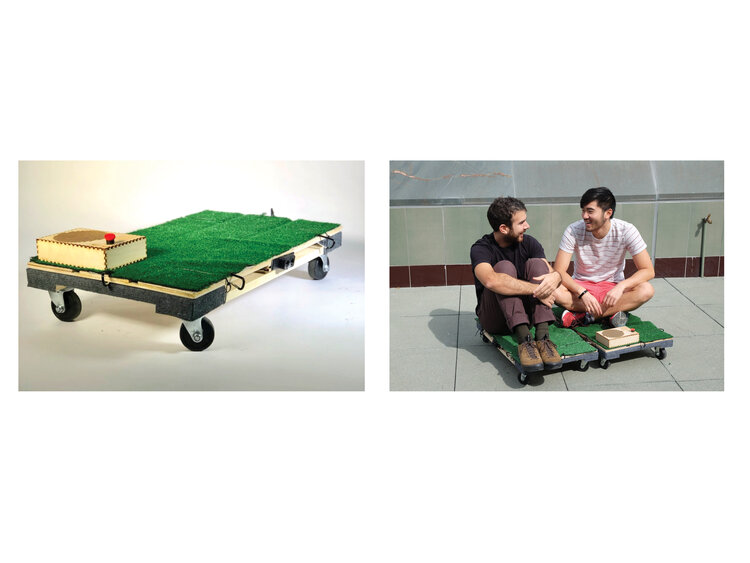Pic-Cells
Critical Making, Spring 2019
UC Berkeley
Mobility Design
Patrick Lai, Andrew Louie, Ivy Nguyen,
Eleni Oikonomaki, Bryan Truitt
An informal design for a modular “parklet”, easily transportable and reconfigurable in space. An optional open-source electronics box emits ambient murmuring conversation and park sounds for a single user, but on sensing a second Pic-Cell, will activate a single button which prompt users with crowdsourced discussion questions.

In the digital age, the art of conversation is slowly dying. People spend time staring into the bright glow of their screens, removing themselves from reality. We created Pic-cell to question the impact technology has on personal relations, and to imagine how technological platforms can facilitate interpersonal interactions. Pic-Cells are modular mobile spaces that mimic grass parks. Used individually, a Pic-Cell emits ambient crowd noise, to attract users and help riders feel like they have company.


Once linked with another Pic-Cell, built-in proximity sensors stop playback, allowing users to talk freely. Pic-Cells are equipped with a conversation starter. At the press of a button, your Pic-Cell will read a question from an open-source queue. With the accompanying app, users can locate a Pic-Cell, other riders, and submit questions to the queue.